Digital Image Correlation Comparison of Damaged and Undamaged Aeronautical CFRPs During Compression Tests
Abstract
1. Introduction
2. Materials and Methods
2.1. Material Description and Preparation for Measurements
- [45F/0T/0T/45F/0T/0T/0F/0T/0T/0F/0T/0T/45F/0T]s where F = Fabric, T = Tape.
- [45F/0F/FOAM 3mm/0F/45F] where F= Fabric.
2.2. Configuration of the Measurement Chain
- Span length between cameras 40 cm
- Object’s distance from the cameras 50 cm
- Cameras’ Inclination 21.8°
- Diaphragm opening f/8
3. Results and Discussion
4. Conclusions
Author Contributions
Funding
Acknowledgments
Conflicts of Interest
References
- Campbell, F.C., Jr. Manufacturing Technology for Aerospace Structural Materials, 1st ed.; Elsevier: Amsterdam, The Netherlands, 2006; ISBN 9781493303892. [Google Scholar]
- Barile, C.; Casavola, C.; Pappalettere, C.; Tursi, F. RFI composite materials behaviour. Struct. Integr. Life 2018, 10, 209–213. [Google Scholar]
- Barile, C.; Casavola, C.; Pappalettere, C. The influence of stitching and unconventional fibres orientation on the tensile properties of CFRP laminates. Compos. Part B Eng. 2017, 110, 248–254. [Google Scholar] [CrossRef]
- Benchekchou, B.; Coni, M.; Howarth, H.V.C.; White, R.G. Some aspects of vibration damping improvement in composite materials. Compos. Part B Eng. 1998, 29, 809–817. [Google Scholar] [CrossRef]
- Abusafieh, A.; Federico, D.; Connell, S.; Cohen, E.J.; Willis, P.B. Dimensional stability of CFRP composites for space based reflectors. Proc. SPIE Int. Soc. Opt. Eng. 2001, 4444, 9–16. [Google Scholar]
- Varma, I.K.; Gupta, V.B. Thermosetting Resin Properties; IIT: Delhi, India, 2000; Volume 2, ISBN 0-080437206. [Google Scholar]
- Cizravi, J.C.; Subramaniam, K. Thermal and mechanical properties of epoxidized natural rubber modified epoxy matrices. Polym. Int. 1999, 48, 889–895. [Google Scholar] [CrossRef]
- Barile, C.; Casavola, C.; Pappalettera, G.; Pappalettere, C. Hybrid characterization of laminated wood with ESPI and optimization methods. Conf. Proc. Soc. Exp. Mech. Ser. 2013, 3, 75–83. [Google Scholar]
- Barile, C.; Casavola, C.; Pappalettera, G.; Pappalettere, C.; Tursi, F. Drilling speed effects on accuracy of HD residual stress measurements. Conf. Proc. Soc. Exp. Mech. Ser. 2014, 8, 119–125. [Google Scholar]
- Barile, C.; Casavola, C.; Pappalettera, G.; Pappalettere, C. Mechanical characterization of SLM specimens with speckle interferometry and numerical optimization. Conf. Proc. Soc. Exp. Mech. Ser. 2011, 6, 837–843. [Google Scholar]
- Barile, C.; Casavola, C.; Pappalettera, G.; Pappalettere, C. Residual stress measurement by electronic speckle pattern interferometry: A study of the influence of geometrical parameters. Struct. Integr. Life 2011, 11, 177–182. [Google Scholar]
- Gu, G.; Wang, K.; Zhou, K.; Xu, X. Accurate measurement of composite laminates deflection using digital speckle pattern interferometry. Optik 2013, 124, 4117–4119. [Google Scholar] [CrossRef]
- Goidescu, C.; Welemane, H.; Garnier, C.; Fazzini, M.; Brault, R.; Péronnet, E.; Mistou, S. Damage investigation in CFRP composites using full-field measurement techniques: Combination of digital image stereo-correlation, infrared thermography and X-ray tomography. Compos. Part B Eng. 2013, 48, 95–105. [Google Scholar] [CrossRef]
- Boccaccio, A.; Casavola, C.; Lamberti, L.; Pappalettere, C. Experimental analysis of foam sandwich panels with projection moiré. Conf. Proc. Soc. Exp. Mech. Ser. 2011, 5, 249–256. [Google Scholar]
- Boccaccio, A.; Casavola, C.; Lamberti, L.; Pappalettere, C. Structural response of polyethylene foam-Based sandwich panels subjected to edgewise compression. Materials 2013, 6, 4545–4564. [Google Scholar] [CrossRef] [PubMed]
- Sutton, M.A.; Orteu, J.J.; Schreier, H.W. Image Correlation for Shape, Motion and Deformation Measurements; Springer Science: Berlin, Germany, 2009. [Google Scholar]
- Dai, Y.-T.; Wang, H.-T.; Ge, T.-Y.; Wu, G.; Wan, J.-X.; Cao, S.-Y.; Yang, F.-J.; He, X.-Y. Stereo-digital image correlation in the behavior investigation of CFRP-steel composite members. Steel Compos. Struct. 2017, 23, 727–736. [Google Scholar]
- Caggegi, C.; Chevalier, L.; Pensée, V.; Cuomo, M. Strain and shear stress fields analysis by means of Digital Image Correlation on CFRP to brick bonded joints fastened by fiber anchors. Constr. Build. Mater. 2016, 106, 78–88. [Google Scholar] [CrossRef]
- Vieille, B.; Aucher, J.; Taleb, L. Overstress accommodation in notched woven-ply thermoplastic laminates at high-temperature: Numerical modeling and validation by Digital Image Correlation. Compos. Part B Eng. 2013, 45, 290–302. [Google Scholar] [CrossRef]
- Casavola, C.; Moramarco, V.; Pappalettere, C. Experimental and numerical characterization of the impact response of polyethylene sandwich panel: A preliminary study. Appl. Mech. Mater. 2011, 70, 195–200. [Google Scholar] [CrossRef]
- Ajovalasit, A. Analisi Sperimentale Delle Tensioni Con la Fotomeccanica; ARACNE Editrice: Ariccia, Italy, 2009. [Google Scholar]
- ASTM D7137/D7137M-12. Standard Test Method for Compressive Residual Strength Properties of Damaged Polymer Matrix Composite Plates; ASTM International: West Conshohocken, PA, USA, 2012. [Google Scholar]
- ASTM D7136/D7136M-12. Standard Test Method for Measuring the Damage Resistance of a Fiber-Reinforced Polymer Matrix Composite to a Drop-Weight Impact Event; ASTM International: West Conshohocken, PA, USA, 2012. [Google Scholar]
- Trahair, N.S. Flexural Torsional Buckling of Structures; CRC Press: Boca Raton, FL, USA, 1993. [Google Scholar]
- Caminero, M.A.; Lopez-Pedrosa, M.; Pinna, C.; Soutis, C. Damage assessment on composite structures using Digital Image Correlation. Appl. Comps. Mater. 2014, 21, 91–106. [Google Scholar] [CrossRef]
- Bull, P.H.; Edgren, F. Compressive strength after impact of CFRP-foam core sandwich panels in marine applications. Compos. Part B 2004, 35, 535–541. [Google Scholar] [CrossRef]
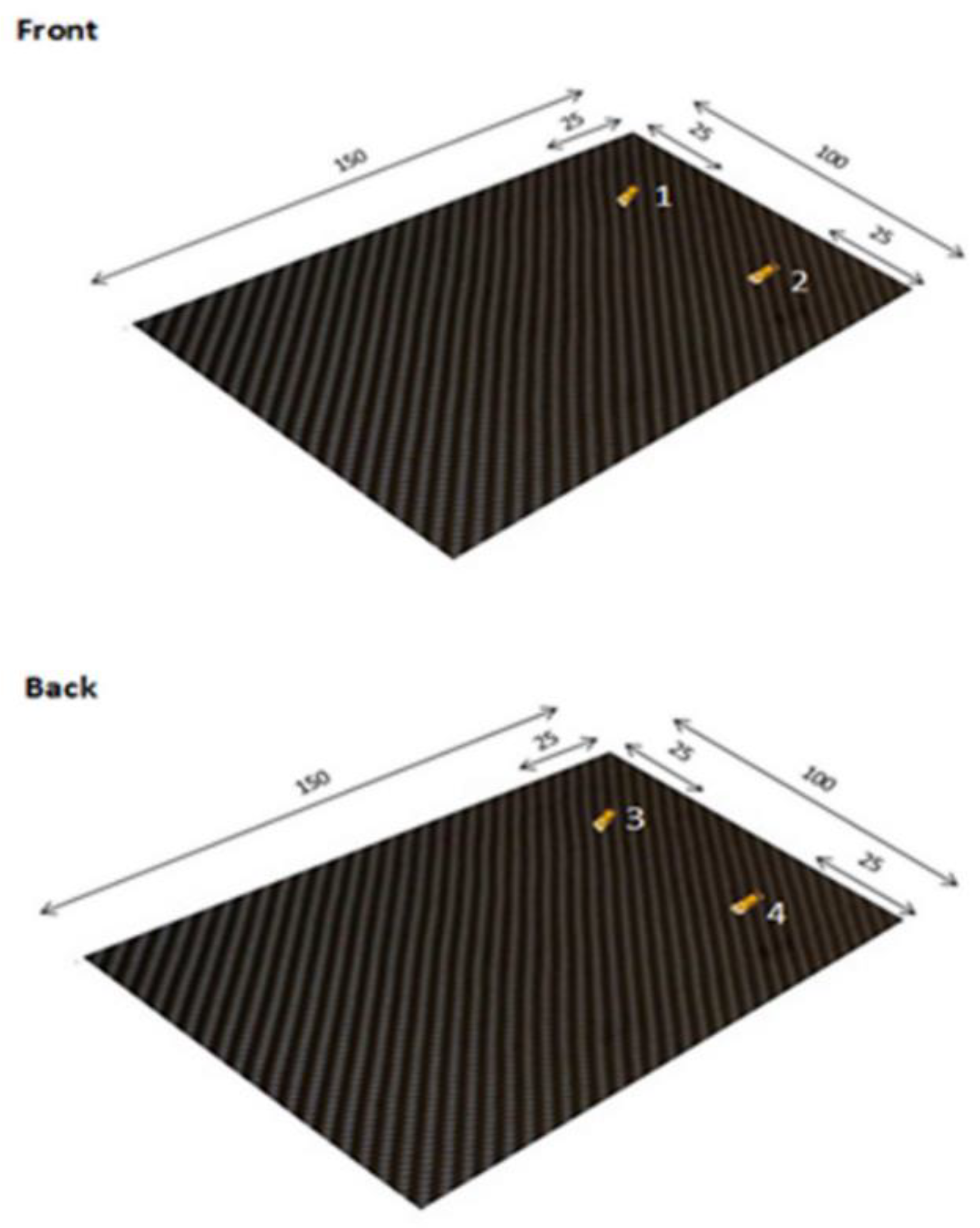
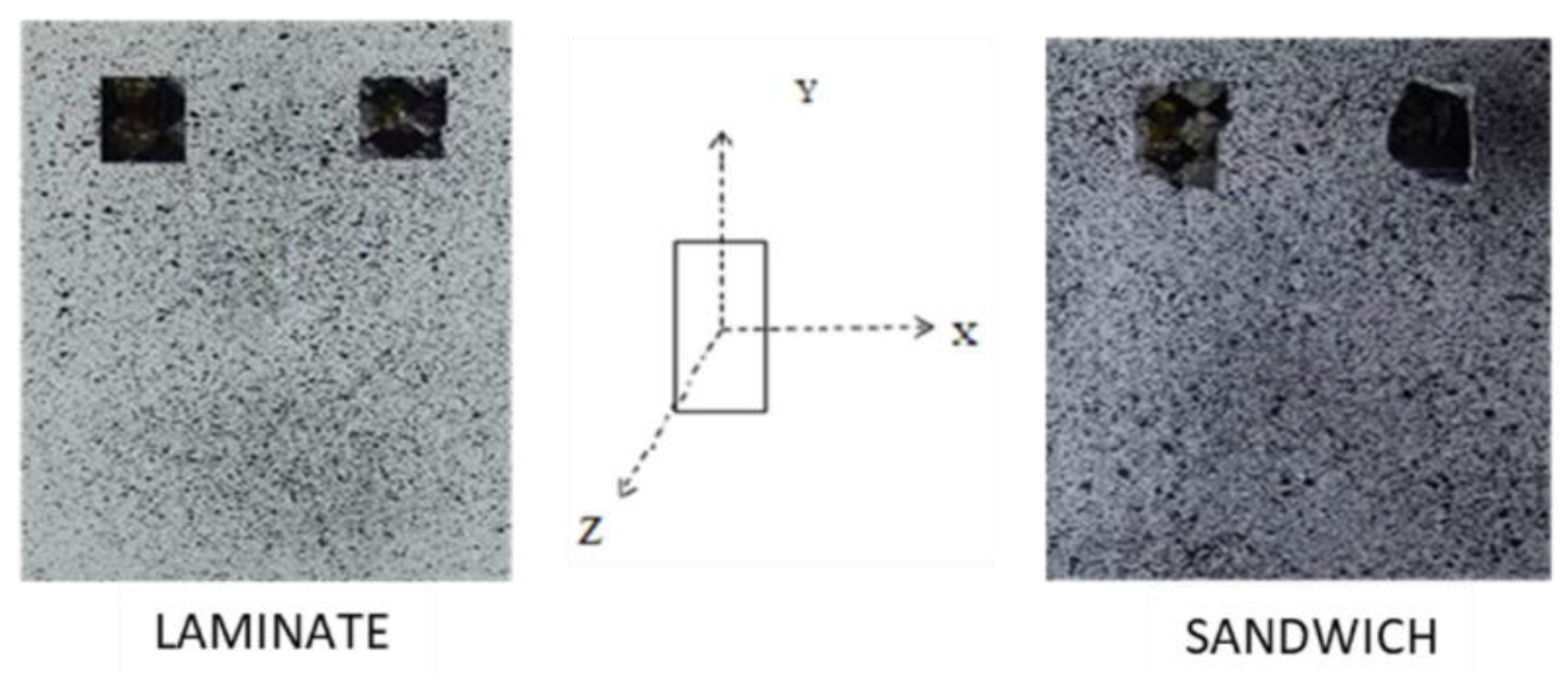
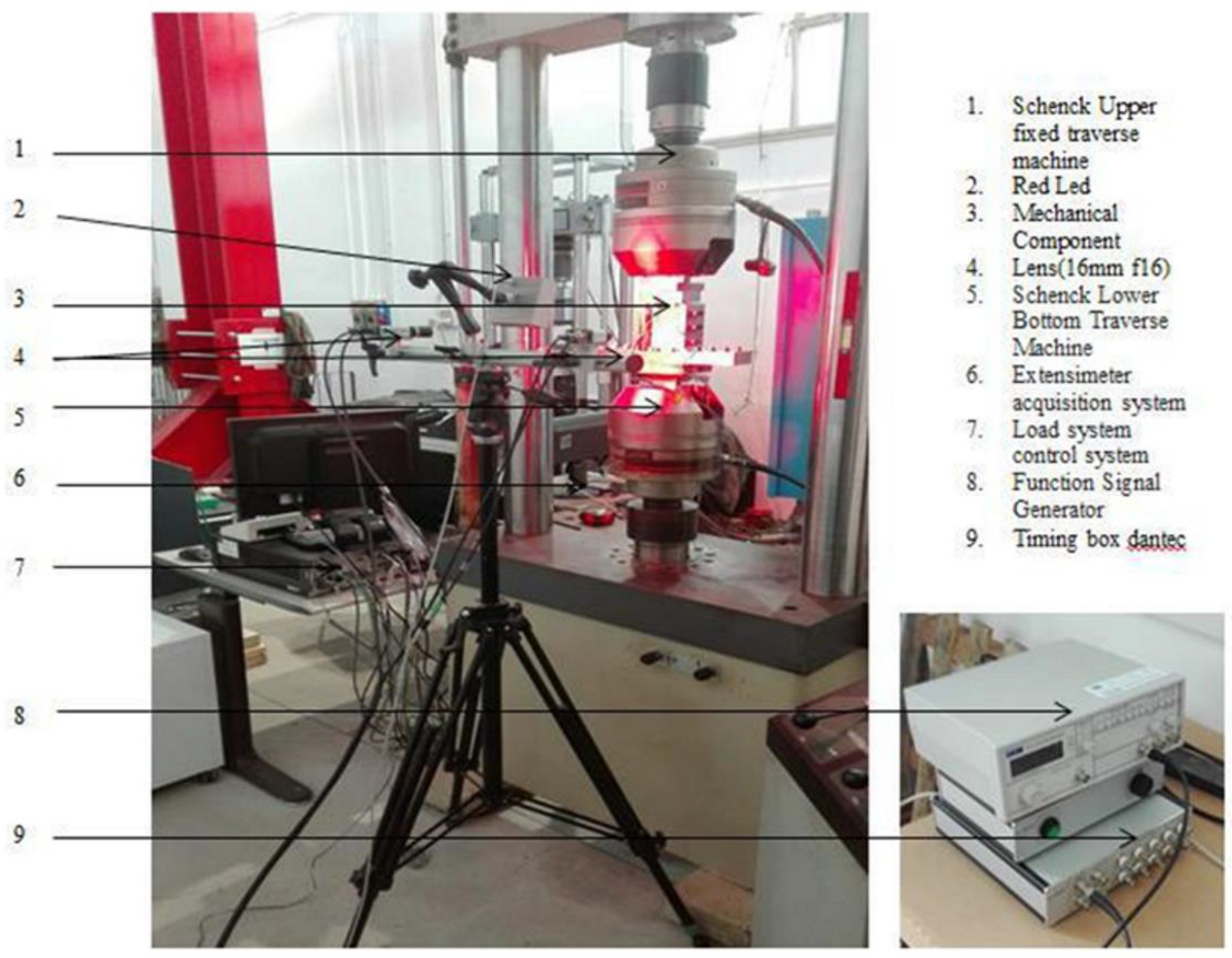
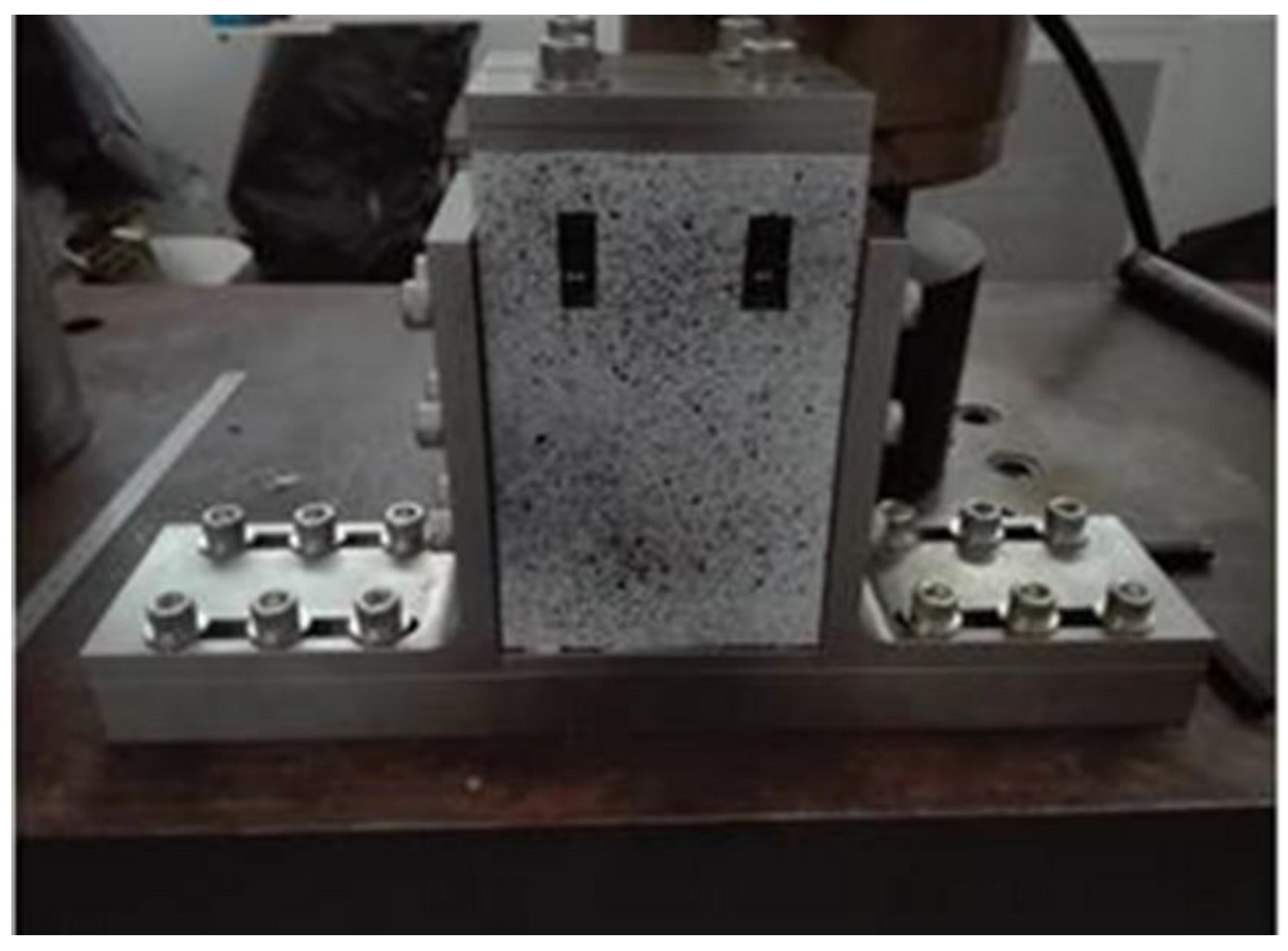
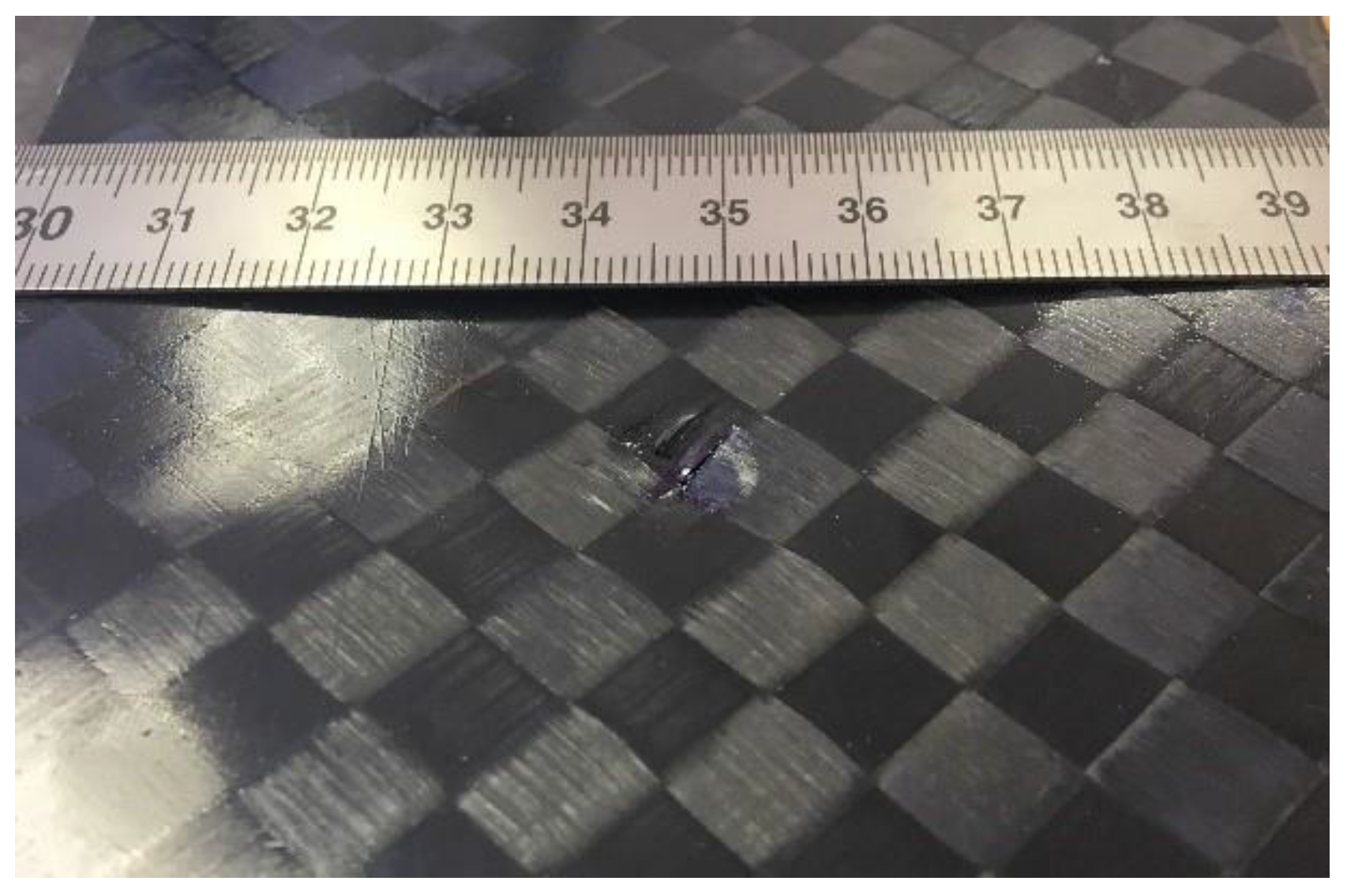
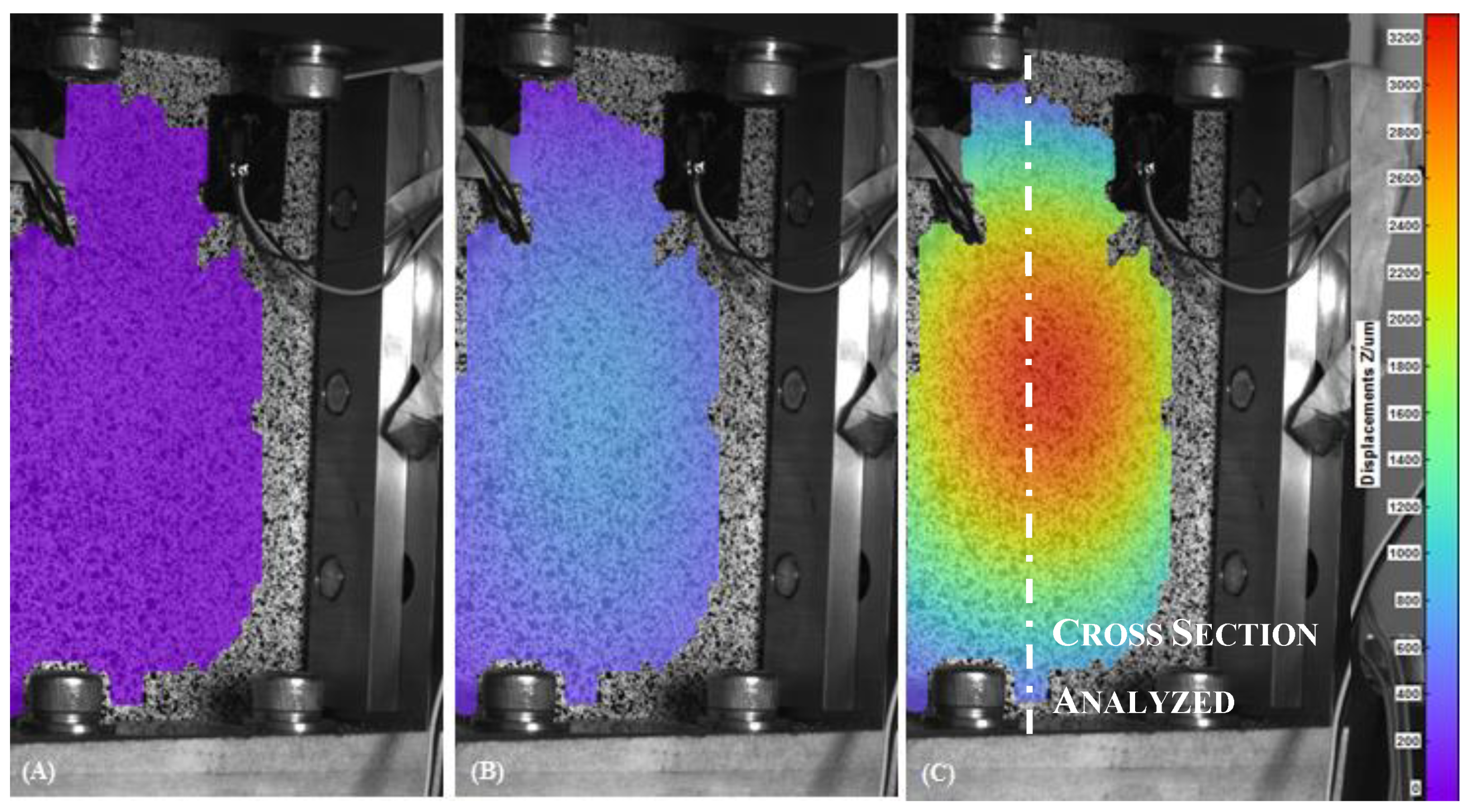
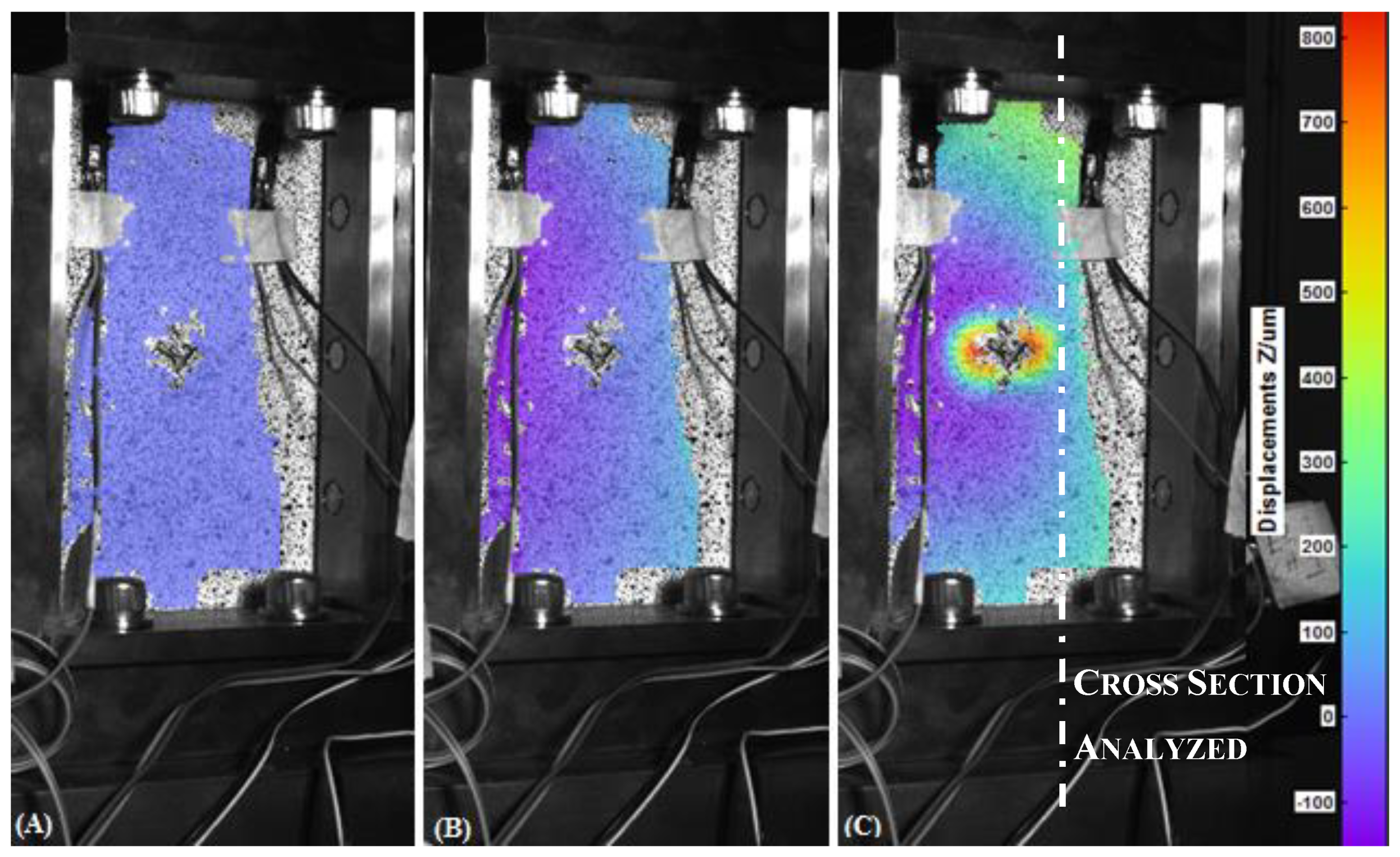
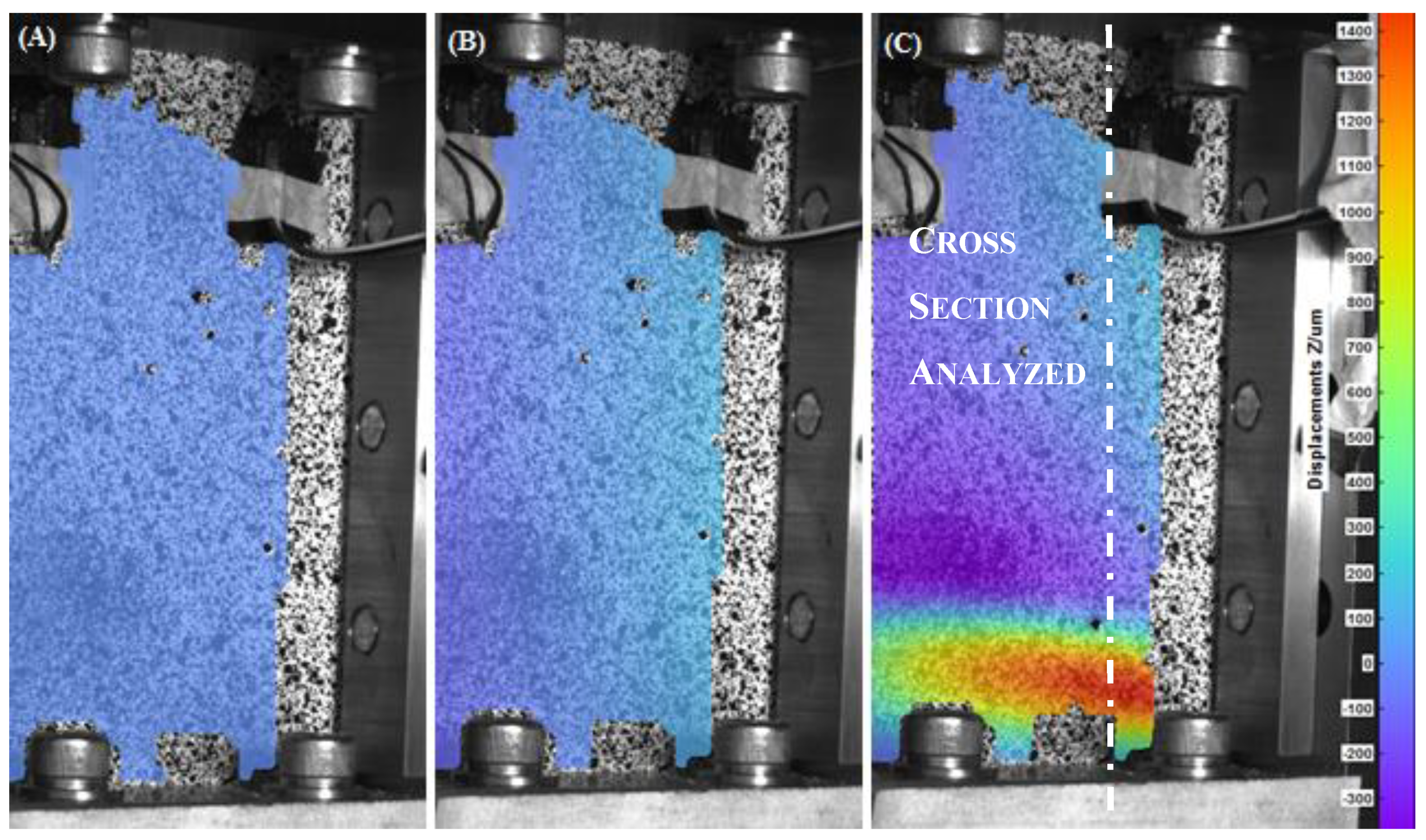
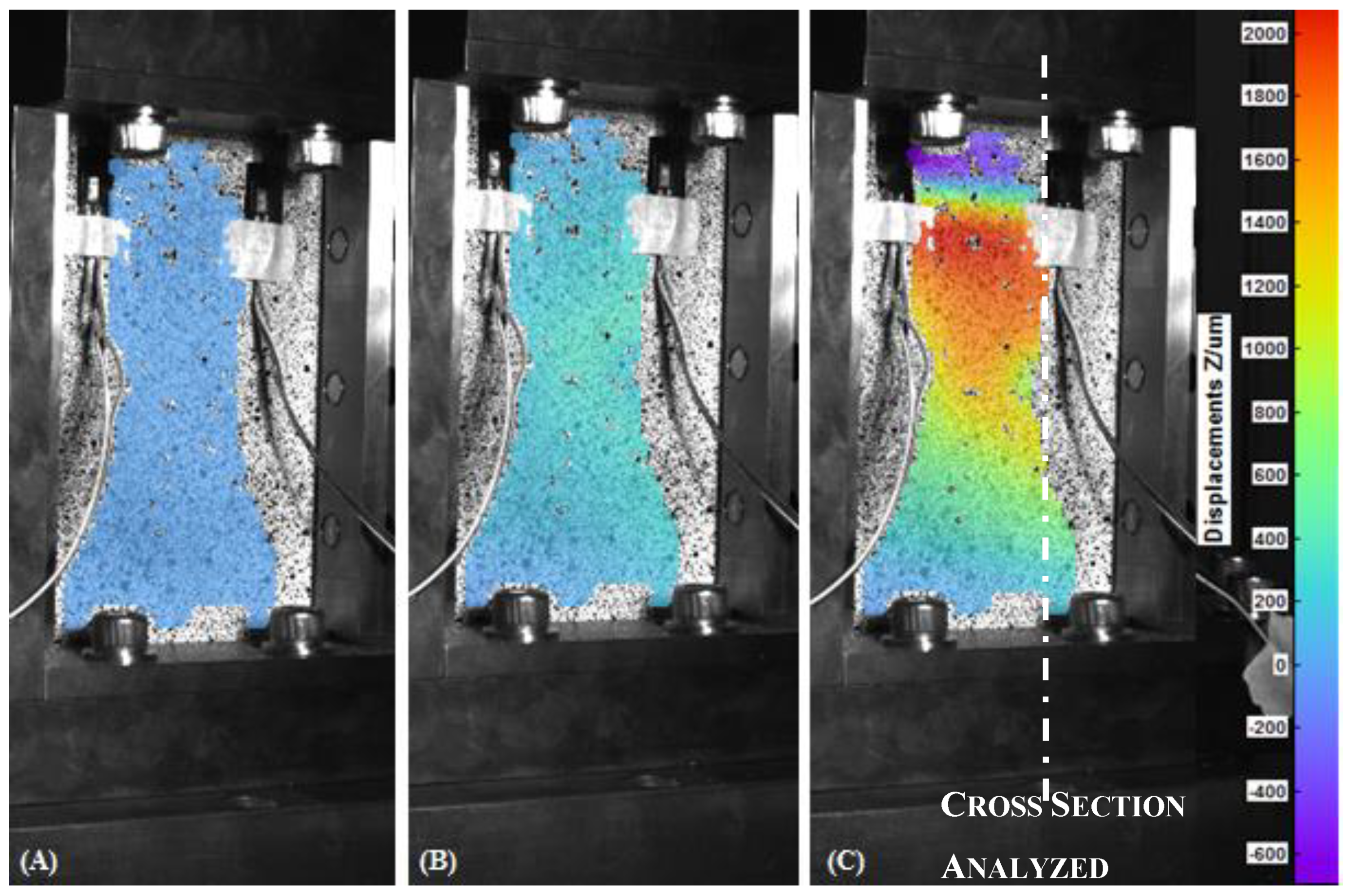
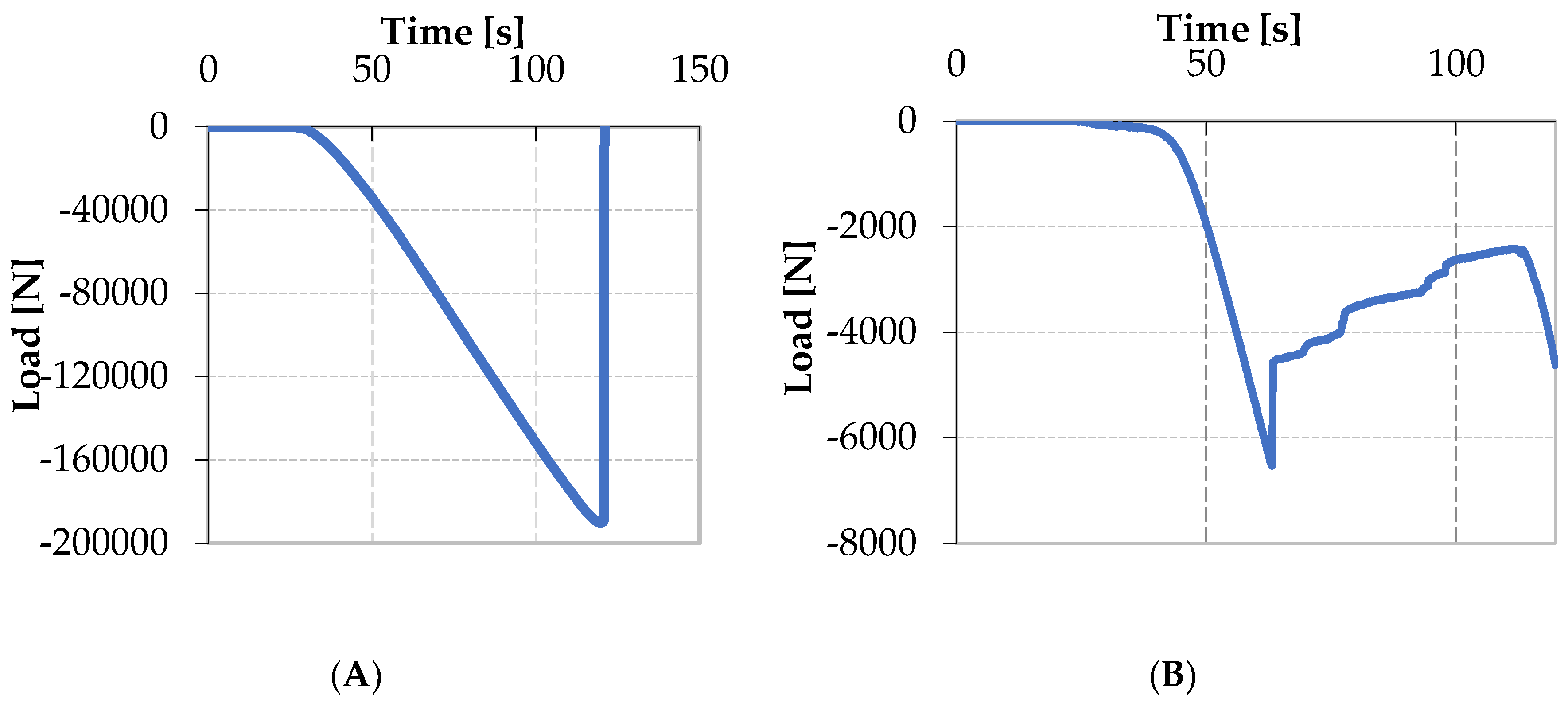

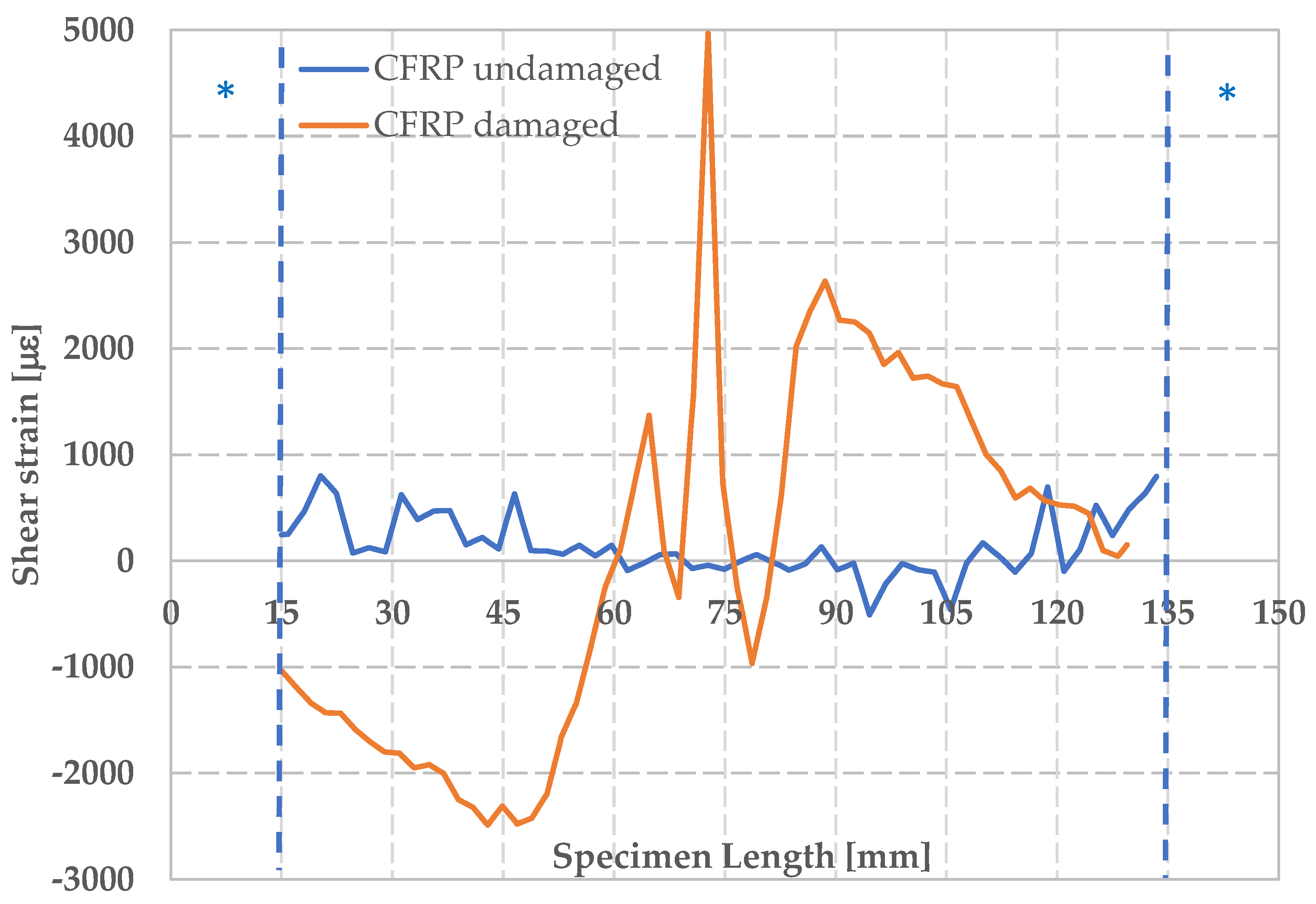
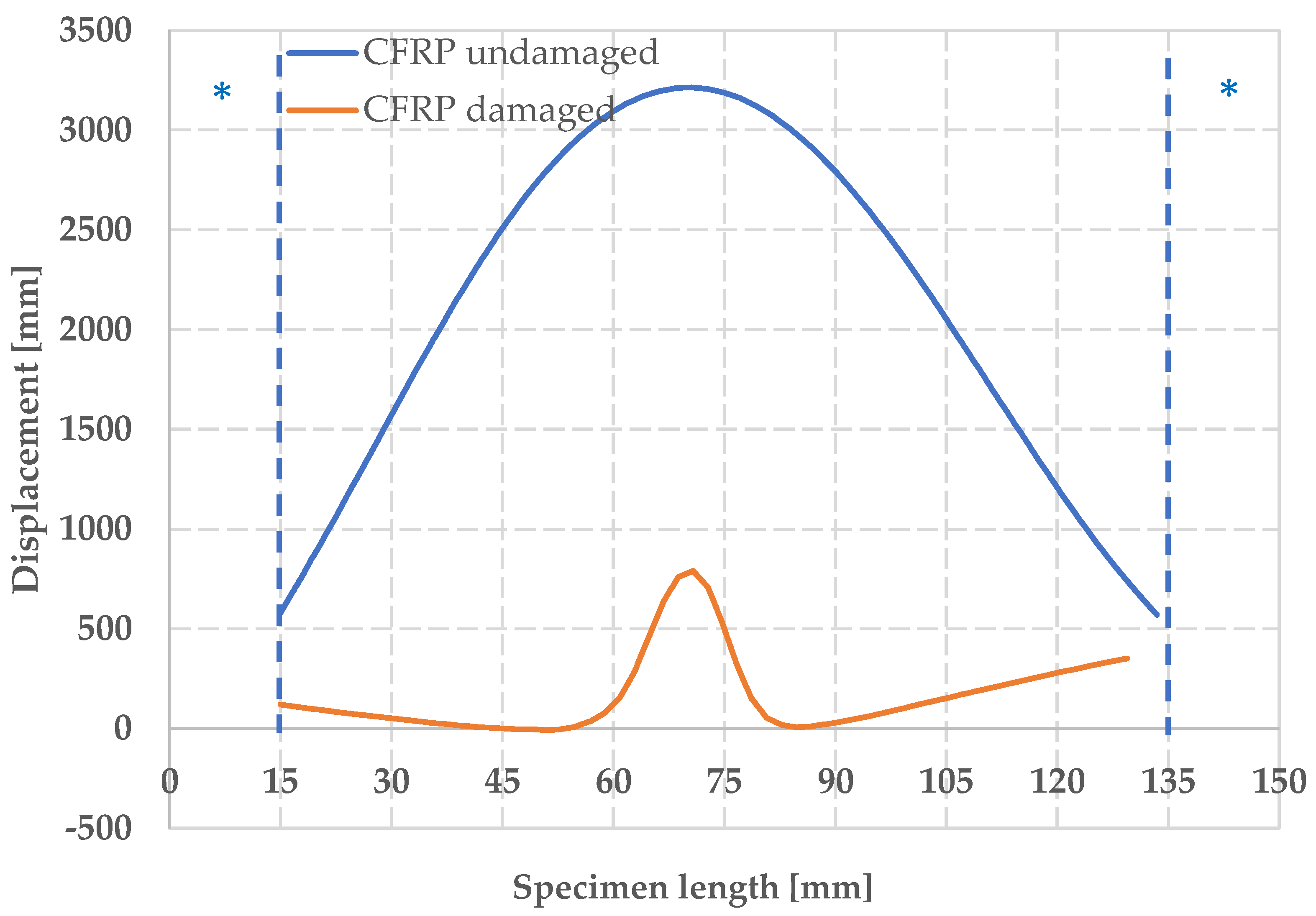
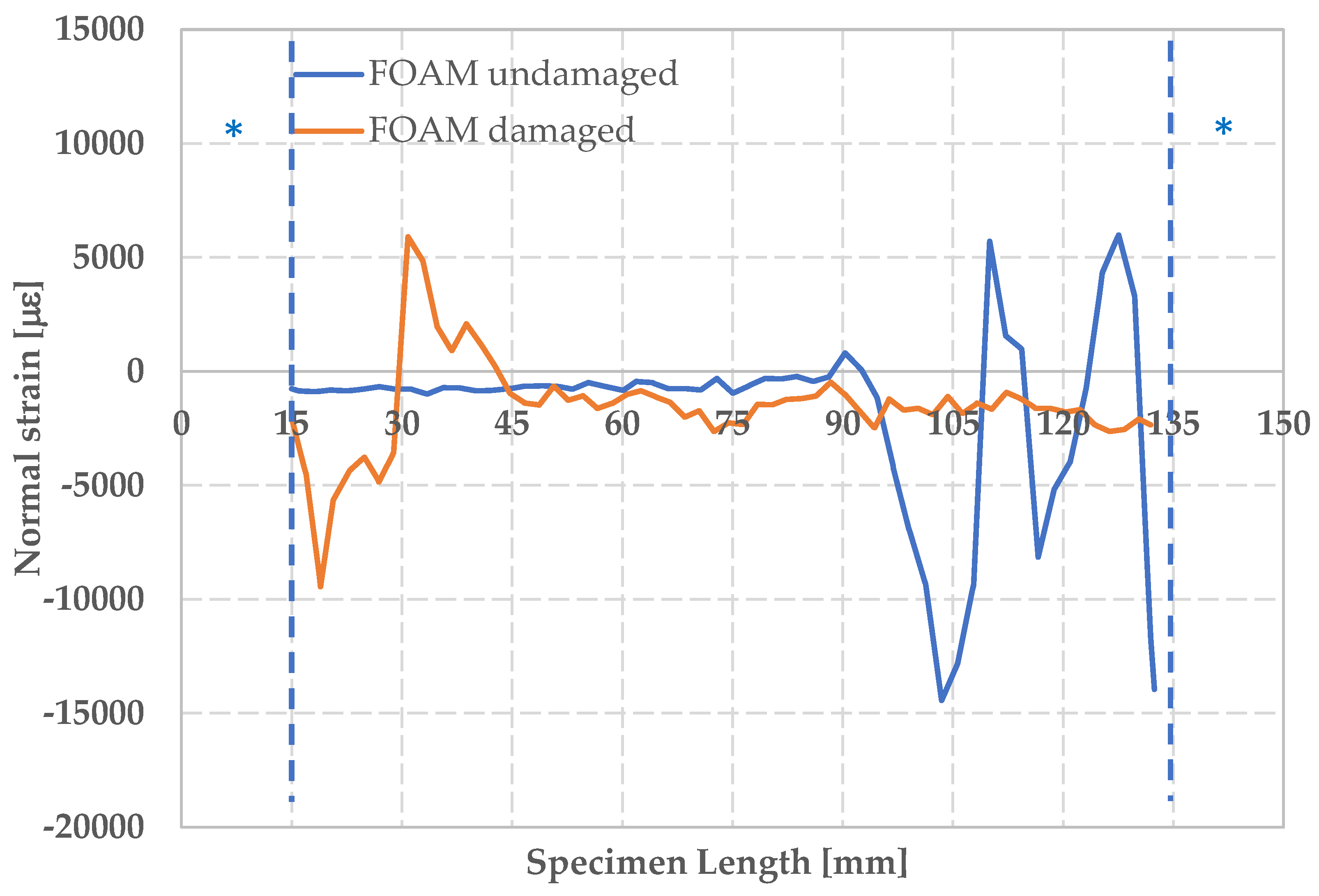
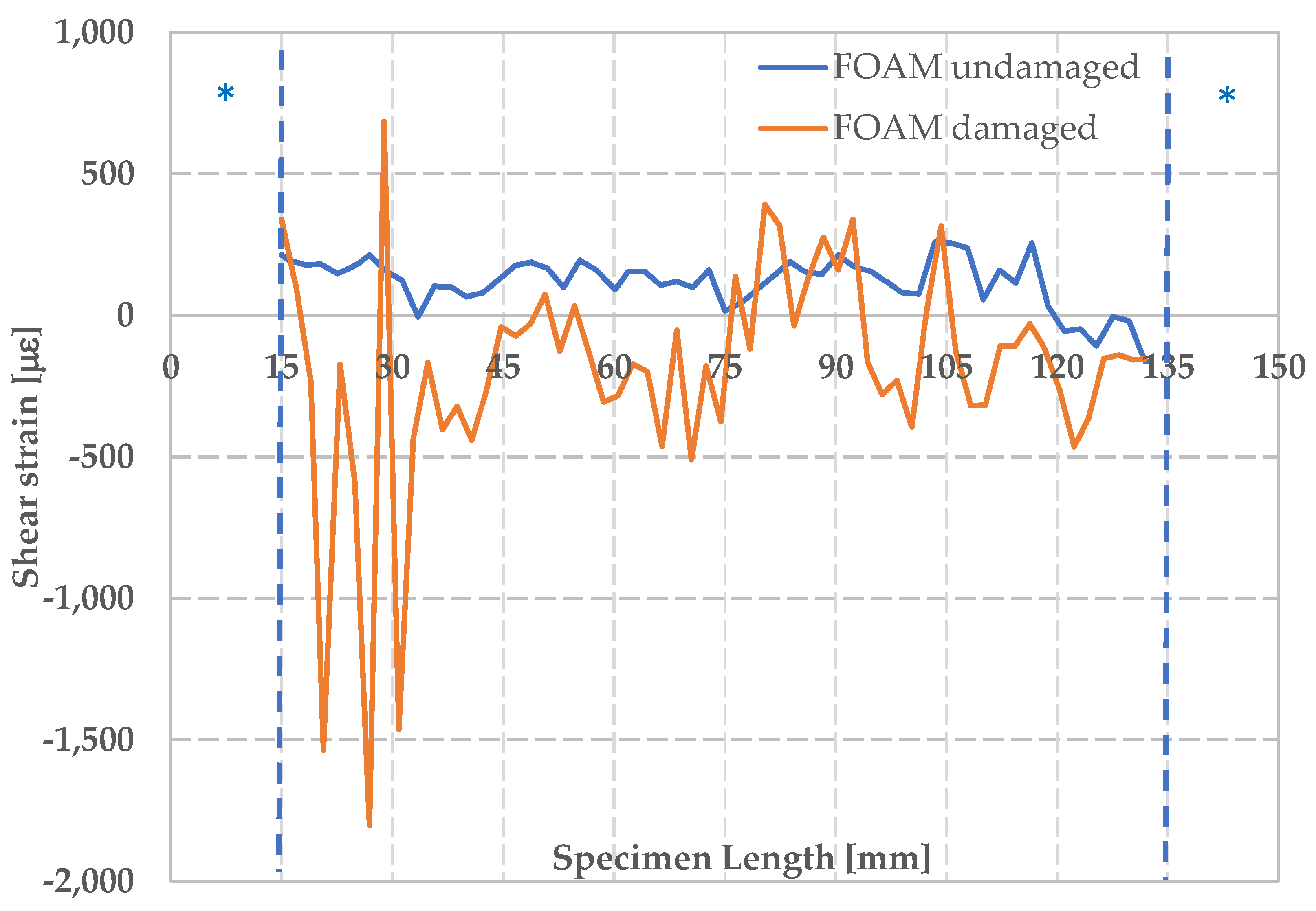
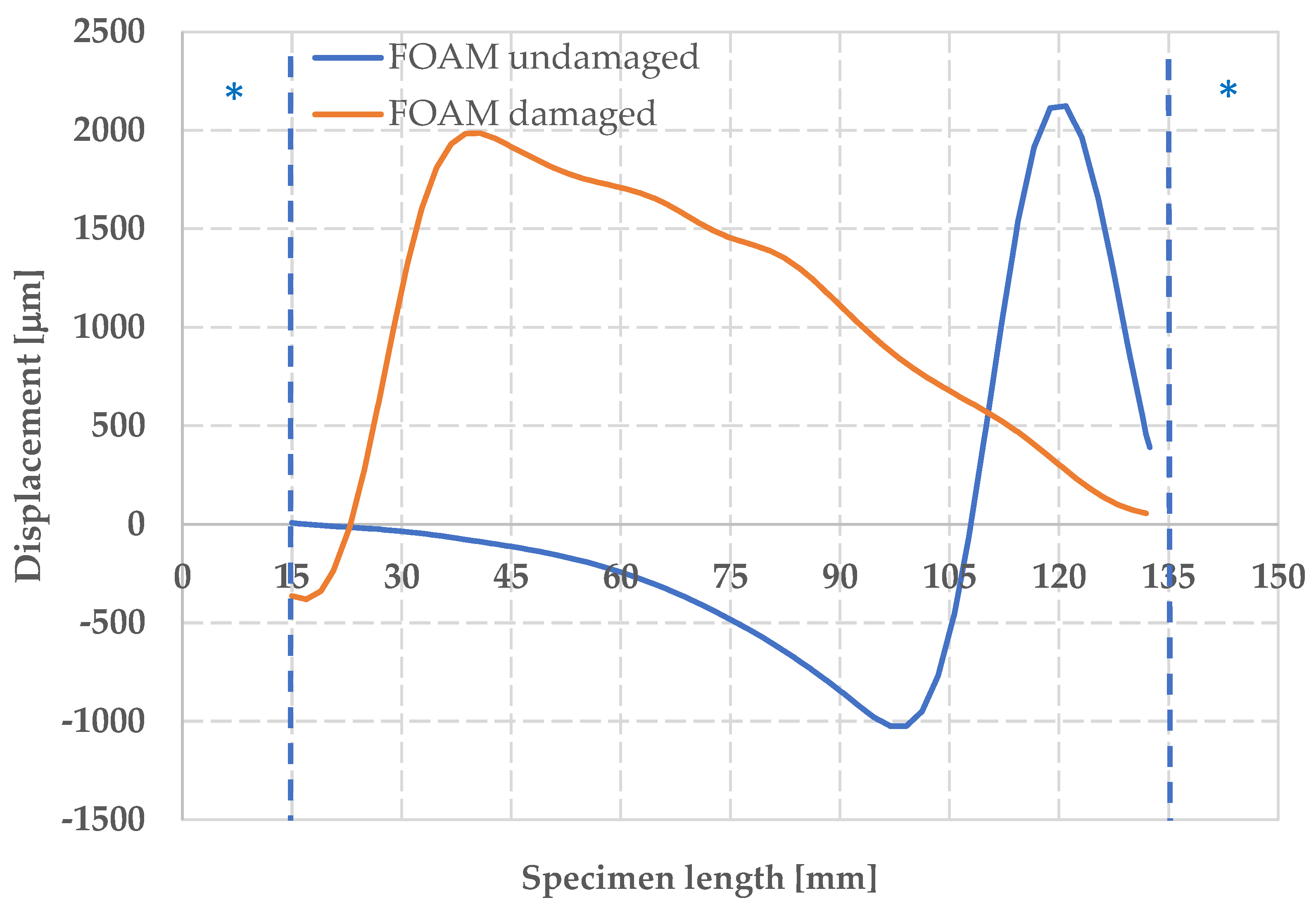
© 2019 by the authors. Licensee MDPI, Basel, Switzerland. This article is an open access article distributed under the terms and conditions of the Creative Commons Attribution (CC BY) license (http://creativecommons.org/licenses/by/4.0/).
Share and Cite
Barile, C.; Casavola, C.; Pappalettera, G. Digital Image Correlation Comparison of Damaged and Undamaged Aeronautical CFRPs During Compression Tests. Materials 2019, 12, 249. https://doi.org/10.3390/ma12020249
Barile C, Casavola C, Pappalettera G. Digital Image Correlation Comparison of Damaged and Undamaged Aeronautical CFRPs During Compression Tests. Materials. 2019; 12(2):249. https://doi.org/10.3390/ma12020249
Chicago/Turabian StyleBarile, Claudia, Caterina Casavola, and Giovanni Pappalettera. 2019. "Digital Image Correlation Comparison of Damaged and Undamaged Aeronautical CFRPs During Compression Tests" Materials 12, no. 2: 249. https://doi.org/10.3390/ma12020249
APA StyleBarile, C., Casavola, C., & Pappalettera, G. (2019). Digital Image Correlation Comparison of Damaged and Undamaged Aeronautical CFRPs During Compression Tests. Materials, 12(2), 249. https://doi.org/10.3390/ma12020249





